Back to School With IWitness: 7 Reasons to Teach with Testimony
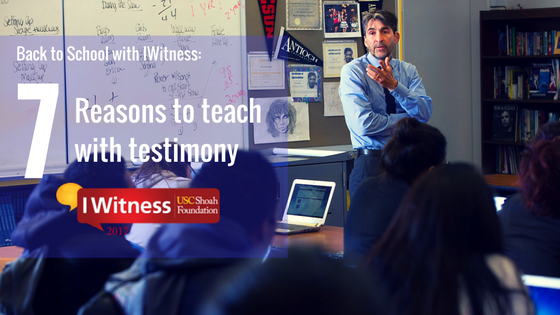
The Visual History Archive from USC Shoah Foundation preserves 53,000 eyewitness testimonies to genocide and the Institute’s educational website IWitness offers access to over 1,500 of those testimonies along with resources and activities to use in the classroom. Besides IWitness being a free online tool for educators and students, aligned with standards, and the ISTE seal of approval; testimony is a powerful teaching and learning tool. Don’t just take our work for it.
“Testimony is a vehicle to enhance students’ understanding of perspective, and the power of the human voice,” IWitness educator Tracy Sockalosky.
As you prepare your lessons plans for this year’s school year explore seven reasons why you should teach with testimony.
1. Provides a human face to the past
Statistics are invaluable pieces of information. In order to understand the gravity of a catastrophic event, we need numbers. When a student the number of Jews murdered during the Holocaust, he/she might be shocked and appalled, even saddened. But there’s a limit to the level of empathy that a number can trigger. Testimony shows students that each of those million victims has his/her own unique and important story, a story that can’t be reduced to just a name or a statistic. A number can only make an impact if a student can recognize the humanity of the faces behind it.
IWitness Resource: Information Quest Growing up Behind the Barbed Wire
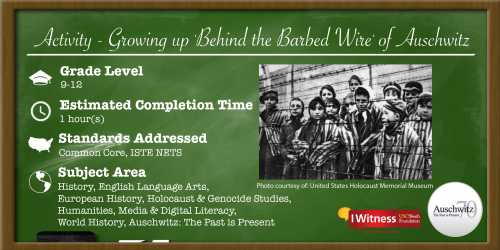
2. Testimony helps teach more than just the facts
The educational relevance of testimony in teaching history is clear--a testimony is a primary source, one of the most direct forms of historical evidence that we have. But beyond the vivid factual details, testimony can give us even more fundamental lessons.
- Discrimination and prejudice
- Diversity and tolerance
- What it means to be a bystander
- Justice and forgiveness
- Empathy
What makes testimony unique as a primary source is that not only do you hear the words of a survivor, you see the nonverbal reactions as well: the pauses, the tears and even laughter. Giving students access to real, human stories of persecution and resilience lets them better understand the personal impact discrimination and violence can have on a human being.
IWitness Resource: Watch Page – Curated testimony clips on 50 topics

3. Teach each Transliteracy
One of the underrated effects of using video testimony in the classroom is the development of connections skills: being able to create and learn from all different platforms of print and digital media, often referred to as “transliteracy.” Students not only watch testimony, but can integrate testimony into video projects, written works, and presentations. Students are able to compare the storytelling properties of video testimonies versus written recollections, they can explore what it means to tell your story and how stories are shared around the world. Integrating testimony into the classroom opens up a whole world of creativity with technology, while still grounding learning in lessons of empathy and perseverance.
IWitness Resource: Video Activity IWitness Video Challenge
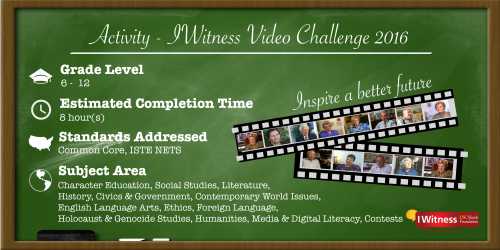
4. Teach Interdisciplinary Thinking
In addition to history and social studies, the use of testimony encourages interdisciplinary learning in almost every subject. Students can use video testimony to examine the psychological impacts of enduring trauma or investigate the sociological and anthropological implications of storytelling and collecting stories. Students learn directly from survivors about their diverse cultures, not just the fast facts, but the ways that culture is integrated into their daily lives. Testimony lets students’ bridge mental gaps between subjects and learn more holistically, building critical thinking skills along the way.
IWitness Resource:
A new Connections video from IWitness on Guidelines for Teaching with Testimony.
5. Teach Self-Reflection
Using testimony in the classroom can be a method of encouraging self-reflection, challenging students to examine the type of impact they want to make on the world after hearing the hopes and wishes of people who have endured so much hatred and survived.
IWitness Resource: Narratives of Identity: In the Open or in the Shadows
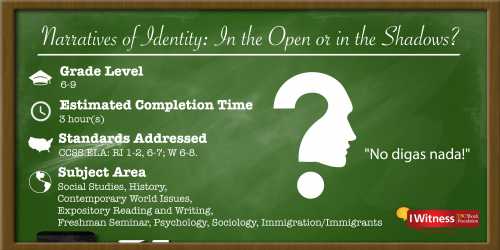
6. Teach the present, not just the past
Genocide is not a thing of the past. The notion of ‘never again’ that emerged after World War II promised that a genocide like the Holocaust would never happen again. And yet, our modern day has been plagued with instances of violent discrimination, much of which meets the recognized definition of genocide. The Visual History Archive contains testimonies from survivors of the genocide against the Tutsi in Rwanda, which took place in 1994, only around 20 years ago, and will soon contain testimonies from the Guatemalan genocide of the late 20th century, the effects of which still continue in Guatemala today. Teaching with testimony does not just give students a glimpse into stories of the past, but into modern stories of genocide that continue their effects into their lifetimes.
IWitness Resource: Information Quest: Freddy Mutanguha
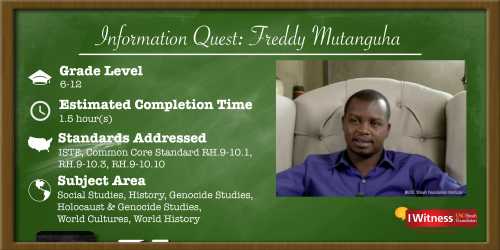
7. Mold students who will stand up to hatred
The overarching theory behind the use testimony in classrooms is the idea that if students are able to see, hear, and reflect on the stories of victims who have stood up to and escaped persecution, they will be more likely to stand up to persecution and hatred in their own lives. IWitness features stories not just from survivors, but from liberators who fought for the freedom of those who were persecuted, and aid-givers who risked their lives to help their friends and neighbors, even strangers who they’d never met before. Testimony lets students see more than one side of every story, giving them a unique understanding of what it means to speak up and be spoken up for.
IWitness Resource: The Bystander Effect – Rwanda
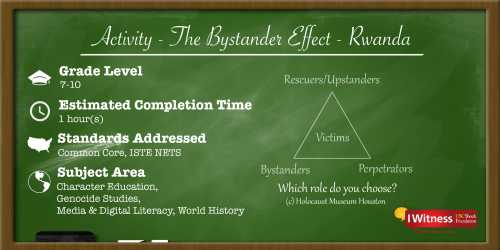
Download Using Testimony in Classroom Guide and watch the new Connections Videos to help you effectively teach with testimony.
